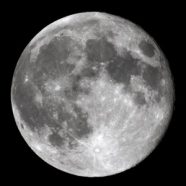Not bone-dry after all: the moon holds water
New moon studies turn up water on and under the lunar surface
Share this:
- Share via email (Opens in new window) Email
- Click to share on Facebook (Opens in new window) Facebook
- Click to share on X (Opens in new window) X
- Click to share on Pinterest (Opens in new window) Pinterest
- Click to share on Reddit (Opens in new window) Reddit
- Share to Google Classroom (Opens in new window) Google Classroom
- Click to print (Opens in new window) Print

This just in: There’s water on the moon. Scientists have suspected as much for several years, but a group of recent studies give the best evidence yet. Earlier studies suggested the water was frozen in icy patches at the moon’s poles, but these new studies suggest there’s a tiny amount of water all over the moon, more than scientist had believed. The new studies have found signs of water both on the moon’s surface and in its interior.
“This is the first detection of water on the moon and we see it all over, not just in the polar regions,” says Roger N. Clark of the U.S. Geological Survey in Flagstaff, Ariz. Clark worked on two of the new studies.
It’s not much water, though. There’s still no swimming or surfing on the moon, and stargazers shouldn’t go looking through telescopes for lunar waterfalls or raging rivers. In fact, this amount of water would be much too small for astronauts on the moon to see. In the words of the poet Samuel Taylor Coleridge, one might say there’s “water, water everywhere,” but not “a drop to drink.”
On the moon’s surface, the concentration of water averages about 1000 parts per million—roughly the same as if one cup of water were poured into a typical playground sandbox. That water acts like dew on Earth: The water that forms on the surface quickly disappears later in the same lunar day. (A “lunar day” is a day on the moon, which lasts about four Earth weeks.) The water disappears by becoming a gas, through the process of evaporation. This cycle of formation and evaporation happens every day.
Clark, the scientist at the U.S. Geological Survey, says he and his team first found some of the newly reported evidence of water on the moon in 1999. In that year, the Cassini spacecraft took measurements of the moon as it flew by on its way to Saturn. (Cassini reached Saturn in 2004 and since then has been beaming back beautiful pictures of Saturn’s rings.) When Clark studied the data sent back by Cassini, he first saw the signs of water.
Clark was excited about that first discovery, but he wanted to make sure other scientists could also find water. “The detection was so fantastic,” he says, “I felt we needed confirmation.” His conclusion—that there was water on the moon—needed verification.
Verification is an important part of the scientific process—once a scientist makes a discovery about the natural world, other scientists must be able to do the same experiment and get the same results. If other scientists cannot get the same results, the original conclusion may need revision.
Confirmation of Clark’s original findings finally came earlier this year from two other spacecraft that also took measurements of the moon’s surface. One of these, NASA’s Deep Impact spacecraft, has been used to study comets. The other, called Chandrayaan-I, is the first mission to the moon from India. Hydrogen—one of the components of water—has also been found by the Lunar Reconnaissance Orbiter, a spacecraft that orbits the moon taking measurements.
Jessica Sunshine of the University of Maryland in College Park led the study of data from Deep Impact. Sunshine has an idea for how water forms on the moon’s surface. Water is made of hydrogen and oxygen. Some minerals on the moon’s surface are already rich in oxygen, and hydrogen may come from the solar wind. (The solar wind is an invisible stream of radiation that comes from the sun.) Later, heat from sunshine may vaporize the newly formed water.
In addition to finding water on the surface of the moon, scientists have also found water in the moon’s interior. Minerals there may have an even higher concentration of water than on the surface. An understanding of the moon’s interior can help scientists figure out how the moon came into existence.
On October 9, a NASA spacecraft called LCROSS is supposed to crash into the moon, and scientists hope that the dust cloud from the collision will further improve their understanding of lunar water. “Our picture of a bone-dry moon is clearly in need of updating,” says Robin Canup, a scientist at the Southwest Research Institute in Boulder, Colo.
POWER WORDS
evaporate/vaporize To convert or change into a vapor.
mineral A naturally occurring, homogeneous inorganic solid substance having a definite chemical composition and characteristic crystalline structure, color, and hardness.
verification A confirmation of truth or authority, or the evidence for such a confirmation, or a formal assertion of validity.
solar wind A stream of high-speed, ionized particles ejected primarily from the sun’s corona.






